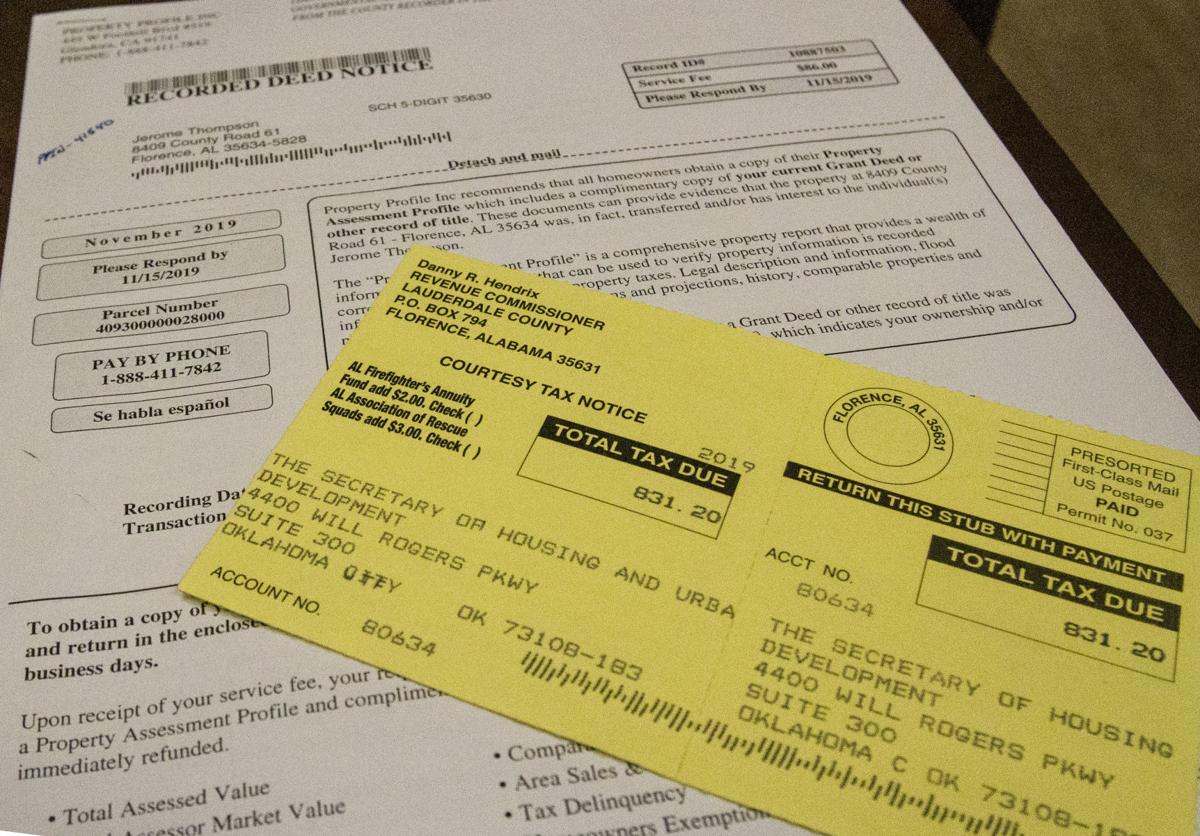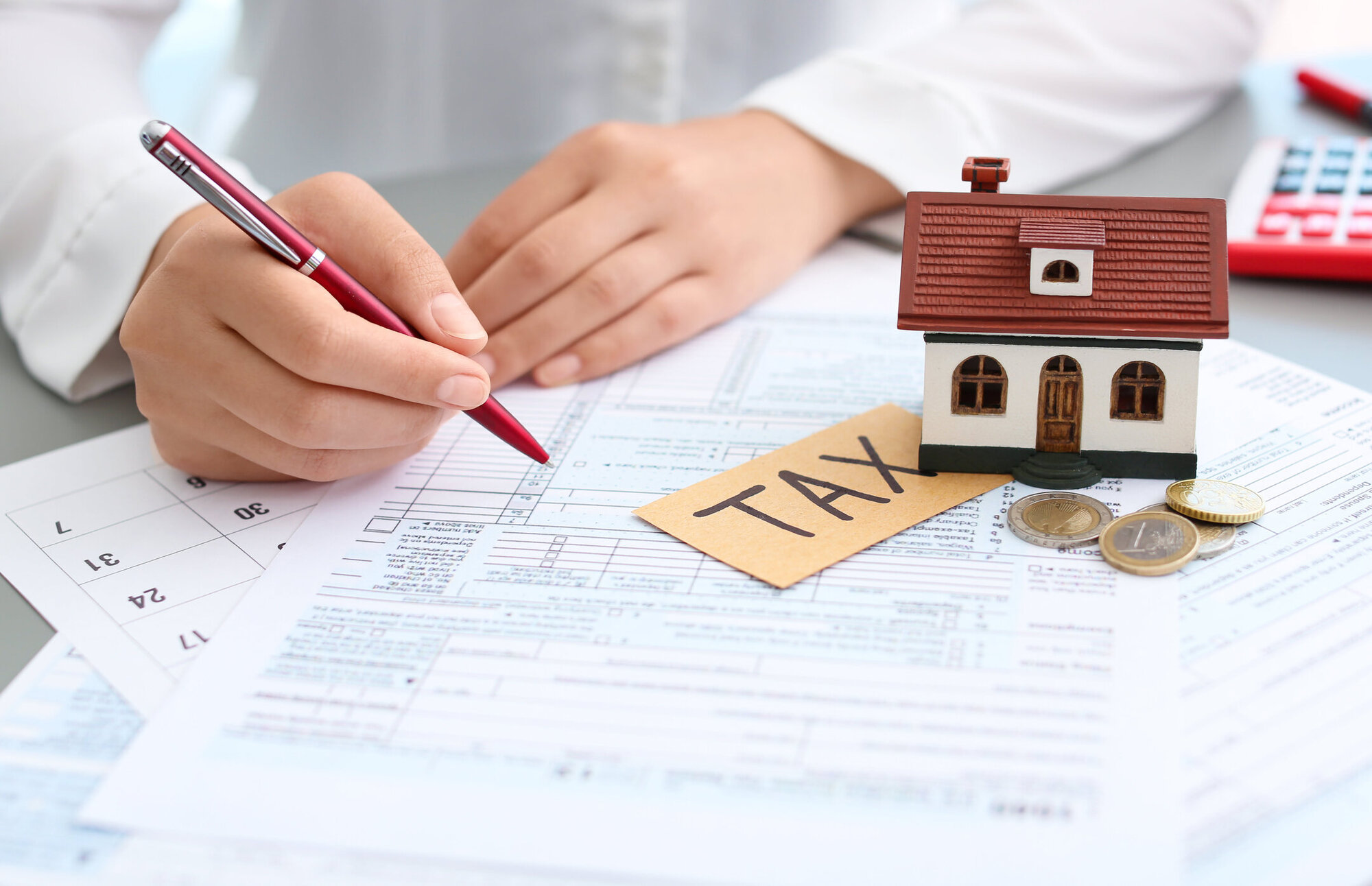Home>Home Maintenance>What Is Property Assessment Profile


Home Maintenance
What Is Property Assessment Profile
Modified: March 6, 2024
Learn about property assessment profiles and how they can help with home maintenance. Find out the importance of understanding your property's value and assessment for effective property management.
(Many of the links in this article redirect to a specific reviewed product. Your purchase of these products through affiliate links helps to generate commission for Storables.com, at no extra cost. Learn more)
Introduction
Welcome to the world of property assessment profiles. Whether you’re a homeowner, a real estate agent, or simply curious about the value of a property, understanding what a property assessment profile is can be incredibly valuable. In this article, we’ll delve into the concept of property assessment profiles, their purpose, importance, and how they are created.
A property assessment profile is essentially a detailed report that provides information about a particular property’s value, characteristics, and condition. It is typically conducted by professional assessors or appraisers who evaluate various factors to estimate the worth of a property. These profiles are used by homeowners to understand the value of their property, by real estate agents to determine listing prices, and by lenders to assess the risk associated with a property before providing a loan.
Key Takeaways:
- Property assessment profiles are detailed reports created by professionals to estimate a property’s value. They help homeowners, real estate agents, and lenders make informed decisions about buying, selling, and financing properties.
- Property assessment profiles provide accurate and unbiased property valuations, aiding in setting fair listing prices, determining property taxes, and assessing the risk for lenders. They play a crucial role in ensuring transparency and fairness in the real estate market.
Read more: What Is Property Assessment
Definition of Property Assessment Profile
A property assessment profile is a comprehensive report that provides detailed information about a specific property. It serves as a reference guide for assessing the value, characteristics, and condition of a property. The profile is created by professional assessors or appraisers who utilize a standardized process to gather data and analyze relevant factors. These factors may include the property’s location, size, condition, amenities, and recent comparable sales in the area.
The primary purpose of a property assessment profile is to determine an accurate and fair market value for a property. This valuation is crucial for a variety of reasons, including property tax assessments, insurance coverage, buying or selling a property, obtaining financing, and legal disputes.
Property assessment profiles are created based on specific regulations and calculations set forth by governing authorities such as local assessment offices or appraisal associations. These regulations ensure consistency and fairness in determining property values across different geographical areas.
It is important to note that a property assessment profile is different from a home inspection report. While both provide valuable information about a property, a home inspection focuses on the condition of the property’s structure, systems, and components, whereas a property assessment profile focuses on its overall value.
In some cases, property assessment profiles may also include additional information such as zoning restrictions, property taxes, historical data, and neighborhood demographics. These details provide a holistic view of the property, aiding in decision-making processes for buyers, sellers, and investors.
Purpose and Importance of Property Assessment Profiles
The purpose of property assessment profiles is to provide an accurate and unbiased evaluation of a property’s value. These profiles serve various important purposes, benefiting homeowners, real estate professionals, lenders, and the overall community. Let’s explore the significance of property assessment profiles in more detail:
1. Property Valuation:
A property assessment profile plays a crucial role in determining the fair market value of a property. By considering factors such as location, size, condition, and recent comparable sales, assessors can provide an unbiased estimate of the property’s worth. This valuation is used to determine property taxes, insurance coverage, listing prices, and negotiate fair purchase or sale prices.
2. Tax Assessments:
Property assessment profiles are heavily relied upon by local tax authorities to assess property taxes. Municipalities use these profiles to determine the assessed value, which is then used as a basis for calculating property taxes. Accurate assessments ensure that property owners are being taxed fairly and that tax revenues are appropriately allocated for community services and infrastructure.
Read more: What Is A Personal Property Assessment
3. Financing and Investments:
Lenders and investors utilize property assessment profiles to assess the risk associated with providing loans or investing in properties. These profiles provide critical information to evaluate the potential return on investment and assess the overall financial viability of the property. Lenders can make informed decisions on loan amounts, interest rates, and collateral value based on the property assessment profile.
4. Real Estate Market Analysis:
Real estate professionals use property assessment profiles to analyze market trends and determine property values in a given area. This information helps agents accurately list properties for sale and advise buyers on fair offers. It also enables real estate professionals to identify emerging trends, track market fluctuations, and make informed recommendations to their clients.
5. Dispute Resolution:
In legal and financial disputes related to property, a property assessment profile serves as a vital tool for resolving disagreements. Whether it’s for divorce settlements, estate planning, or property-related lawsuits, an unbiased property assessment profile can provide an objective assessment of the property’s value, helping parties come to a fair resolution.
Overall, property assessment profiles play a fundamental role in ensuring fairness, transparency, and accuracy in property transactions, taxation, and financial decision-making. They provide stakeholders with the necessary information to make informed choices about their property investments, taxes, and legal matters.
How Property Assessment Profiles are Created
Creating a property assessment profile involves a systematic and detailed process that assessors or appraisers follow to gather information and evaluate key factors. Here is an overview of the typical steps involved in creating a property assessment profile:
Read more: What Is A Property Assessment Notice
1. Property Inspection:
The first step in creating a property assessment profile is conducting a thorough inspection of the property. The assessor will visit the property and assess its physical characteristics, including the size, layout, condition, and any improvements or amenities present. They may also take photographs and measurements to document the property’s features accurately.
2. Gather Relevant Data:
The assessor will then gather relevant data about the property and the local real estate market. This includes information on recent sales of similar properties in the area, zoning restrictions, historical data, and any other relevant factors that may impact the property’s value. They may consult public records, local real estate databases, and other reliable sources to gather this information.
3. Analyze Market Conditions:
The assessor will analyze the current state of the real estate market, considering factors such as supply and demand, market trends, and economic conditions. This analysis helps determine how the market influences the property’s value.
4. Apply Valuation Methods:
Assessors utilize various valuation methods to estimate the property’s worth. The most commonly used methods include the sales comparison approach, income approach, and cost approach. The sales comparison approach involves comparing the subject property to recent sales of similar properties in the area. The income approach focuses on the potential income the property can generate. The cost approach considers the cost of rebuilding the property minus any depreciation.
Read more: What Are Property Assessment Caps
5. Determine the Property Value:
Based on the analysis and valuation methods applied, the assessor will determine the estimated value of the property. This value represents an unbiased assessment of the property’s worth in the current market conditions.
6. Compile the Assessment Profile:
Finally, the assessor compiles all the gathered data, analysis, and the determined property value into an assessment profile. This comprehensive report includes detailed information about the property’s characteristics, valuation methods used, and any relevant considerations that may affect its value. The profile aims to provide a complete overview of the property’s worth and assist stakeholders in making informed decisions.
It is important to note that the process of creating a property assessment profile may vary slightly depending on local regulations, specific property types, and the expertise of the assessor. However, the overall objective remains the same: to provide an accurate and unbiased evaluation of the property’s value.
Key Components of a Property Assessment Profile
A property assessment profile is a comprehensive report that consists of various key components. These components provide detailed information about the property’s characteristics, valuation, and other relevant factors. Here are the essential components typically included in a property assessment profile:
1. Property Details:
This section provides basic information about the property, such as its address, legal description, lot size, and physical features. It may also include details about any improvements, amenities, or special features of the property.
2. Property Valuation:
The heart of the property assessment profile is the property valuation section. This component includes the estimated value of the property determined by the assessor or appraiser. It may also outline the valuation methods used, such as the sales comparison approach, income approach, or cost approach.
3. Comparable Sales:
This section focuses on recent sales of similar properties in the area. It provides details of the comparable properties, including their sale prices, size, condition, and location. By comparing the subject property to these recent sales, it helps support the estimated value determined by the assessor.
4. Property Condition:
Assessors evaluate the condition of the property during the inspection. This component of the profile provides an assessment of the property’s overall condition, including any noticeable defects, repairs needed, or issues that may affect its value. It helps potential buyers and lenders understand the property’s condition and potential maintenance or renovation costs.
5. Zoning and Regulatory Information:
This section provides information about the property’s zoning designation and any applicable zoning restrictions or regulations in the area. It helps stakeholders understand the permitted uses, building restrictions, and any other regulations that may affect the property’s value and potential development.
Read more: What Is MPAC Property Assessment Notice
6. Historical Data:
Some property assessment profiles may include historical data about the property, such as previous sales history, ownership records, and any past assessments. This information can provide insights into the property’s value trends and ownership history.
7. Property Tax Information:
The property assessment profile may also include information about property taxes, including the assessed value, tax rate, and any applicable exemptions or deductions. This helps property owners and potential buyers understand the tax implications of the property.
8. Neighborhood and Market Data:
To provide a comprehensive view, a property assessment profile may include data about the neighborhood and the overall real estate market. This can include information such as demographic trends, recent market activity, and economic indicators that may impact the property’s value.
Together, these key components form a comprehensive property assessment profile that provides stakeholders with a detailed understanding of the property’s characteristics, valuation, and other important considerations. This information is invaluable for making informed decisions, whether it’s for buying or selling a property, obtaining financing, or assessing property tax obligations.
Benefits of Property Assessment Profiles
Property assessment profiles offer numerous benefits to property owners, buyers, sellers, lenders, and the community as a whole. Let’s explore some of the key advantages of utilizing property assessment profiles:
Read more: What Does Property Assessment Mean
1. Accurate Property Valuation:
One of the primary benefits of property assessment profiles is their ability to provide an accurate and unbiased valuation of a property. Assessors use standardized methods to evaluate various factors, ensuring that the estimated value reflects the property’s true worth. This valuation is essential for setting fair listing prices, determining property taxes, obtaining financing, and negotiating transactions.
2. Informed Decision-Making:
Property assessment profiles provide stakeholders with valuable information to make informed decisions. Homeowners can assess the value of their property for refinancing, selling, or property tax planning. Buyers can evaluate a property’s worth before making an offer, while lenders can assess the risk associated with providing a loan. Real estate professionals can use the profiles to guide clients in making sound investment decisions.
3. Transparency and Fairness:
By utilizing property assessment profiles, governments and tax authorities can ensure transparency and fairness in property tax assessments. Property owners can have confidence that their tax obligations are based on accurate assessments, helping to build trust in the tax system and alleviate disputes over tax assessments.
4. Price Setting and Negotiation:
Property assessment profiles play a vital role in setting fair listing prices for sellers and determining reasonable offers for buyers. Sellers can use the profile to justify their asking price, while buyers can rely on the profile to make informed offers. This helps facilitate smoother negotiations between parties and increases the chances of reaching a mutually beneficial agreement.
Read more: How To Do A Property Assessment
5. Risk Assessment for Lenders:
For lenders, property assessment profiles provide valuable information about the property’s value, condition, and marketability. This allows lenders to assess the risk associated with providing a loan and make informed decisions on loan amounts, interest rates, and collateral value.
6. Planning and Development:
Property assessment profiles are essential for urban planning and property development. Governments and city planners can analyze property assessment profiles to make informed decisions about zoning, infrastructure development, and growth strategies. Real estate developers can assess the viability and profitability of potential projects based on property assessment profiles.
7. Dispute Resolution:
In legal and financial disputes involving property, property assessment profiles serve as valuable tools for resolving disagreements. In cases of divorce, inheritance, or property-related lawsuits, an unbiased property assessment profile can provide an objective assessment of the property’s value, helping parties reach a fair and equitable resolution.
Overall, property assessment profiles provide a wide range of benefits, from accurate property valuation and informed decision-making to transparency, fairness, and risk assessment. By utilizing these profiles, stakeholders can make more confident decisions and ensure a fair and efficient property market.
Challenges and Limitations of Property Assessment Profiles
While property assessment profiles provide valuable information, it’s important to acknowledge their limitations and the challenges associated with creating and using these profiles. Here are some of the key challenges and limitations:
1. Subjectivity and Bias:
Even though assessors follow standardized procedures, there is still some subjectivity and room for bias in property assessment profiles. Factors such as the assessor’s experience, personal judgment, and market conditions can impact the accuracy and consistency of the valuation. It’s crucial to ensure that assessors adhere to professional standards and guidelines to minimize subjectivity and maintain fairness.
2. Data Availability and Reliability:
The accuracy and reliability of property assessment profiles heavily rely on the availability and quality of data. Assessors need access to relevant and accurate information, such as recent comparable sales, property records, and market data. However, data availability can vary, especially in areas with limited real estate transactions or inadequate data collection processes. This can potentially impact the accuracy of the profiles.
3. Market Fluctuations:
The real estate market is inherently dynamic, with constantly changing conditions and fluctuations in property values. Property assessment profiles are typically based on recent market data, but this information may quickly become outdated. Market fluctuations can impact the accuracy of the property valuation, especially in rapidly changing markets or volatile economic conditions.
4. Unique Property Characteristics:
Property assessment profiles may struggle to account for unique property characteristics that are not easily quantifiable. Features such as historical significance, architectural uniqueness, or sentimental value may not necessarily be captured in the profiles. Assessors may need to make subjective judgments when dealing with such properties, which can introduce a level of uncertainty in the valuation process.
5. Limited Scope:
Property assessment profiles primarily focus on determining the market value of a property. While they provide crucial information about value, condition, and comparable sales, they may not consider all aspects that may be relevant to stakeholders. For example, profiles may not provide details about specific property defects, potential environmental issues, or future development plans in the local area. Additional inspections or specialized reports may be required to address those specific concerns.
6. Lack of Standardization:
The process and methodology for property assessment profiles can vary across different regions and jurisdictions. This lack of standardization can make it challenging to compare profiles from different areas or ensure consistency in property valuations. It’s important for assessors to follow recognized guidelines and professional standards to maintain consistency and ensure accurate assessments.
While property assessment profiles have their limitations and challenges, they still offer significant value in understanding a property’s worth. It’s important for stakeholders to be aware of these limitations, collaborate with knowledgeable professionals, and consider additional factors when making important real estate decisions.
Examples of Property Assessment Profiles
Property assessment profiles are commonly used in various contexts, including residential, commercial, and industrial properties. While the specific contents of a property assessment profile may vary depending on the jurisdiction and property type, here are a few examples of the type of information that is typically included:
1. Residential Property:
For a residential property, a property assessment profile may include details such as the property’s address, lot size, number of bedrooms and bathrooms, square footage, and year built. It may also feature information on recent comparable sales in the neighborhood, the property’s estimated value, and assessment methods used. Additional information might include property tax data, property condition assessment, and any notable zoning or regulatory restrictions that impact the property.
Read more: How To Challenge A Property Assessment
2. Commercial Property:
In the case of a commercial property, the property assessment profile would provide information about the property’s location, size, zoning designation, and building specifications. This may include details about the property’s occupancy permits, lease agreements, and rental income potential. The profile may also consider the property’s potential for development, assessment of market demand, and comparable sales or rental rates in the area. It may even include environmental assessments or compliance with accessibility regulations.
3. Industrial Property:
For an industrial property, the assessment profile might focus on aspects such as the property’s size, layout, and specialized features like loading docks or manufacturing facilities. It may include information on the property’s utility connections, environmental impact, and compliance with industrial regulations. The profile may assess the property’s market value based on factors such as its proximity to transportation infrastructure, local labor market, and potential for expansion or redevelopment.
4. Vacant Land:
In the case of vacant land, the assessment profile would typically detail the property’s location, size, zoning designation, permitted uses, and any restrictions or easements. It may include information on the land’s topography, soil condition, and environmental considerations that may impact its development potential. The profile may assess the land’s value based on factors such as its proximity to amenities, transportation access, and comparable land sales in the area.
These are just a few examples of property assessment profiles, and the specific components may vary depending on the jurisdiction and property type. Assessors and appraisers utilize these profiles to provide a comprehensive overview of a property’s value and characteristics, aiding in making informed decisions for property owners, buyers, sellers, and lenders.
Conclusion
Property assessment profiles play a vital role in the real estate industry by providing comprehensive information about a property’s value, characteristics, and condition. These profiles are created by professional assessors or appraisers who follow a standardized process to gather data, analyze factors, and estimate the property’s worth.
Throughout this article, we’ve explored the definition of property assessment profiles and their purpose and importance. We’ve discussed how these profiles are created, including steps such as property inspection, data gathering, market analysis, and valuation methods. Additionally, we’ve highlighted the key components that are typically included in a property assessment profile, such as property details, valuation, comparable sales, condition, zoning information, and market data.
Furthermore, we’ve explored the benefits of property assessment profiles, including accurate property valuation, informed decision-making, transparency, fairness, risk assessment for lenders, planning and development insights, and dispute resolution support.
However, it’s important to acknowledge the challenges and limitations associated with property assessment profiles. Subjectivity and bias, data availability, market fluctuations, unique property characteristics, limited scope, and lack of standardization are some of the challenges that need to be considered in the interpretation and use of these profiles.
In conclusion, property assessment profiles are crucial tools for property owners, buyers, sellers, lenders, and communities as a whole. By providing accurate and comprehensive information about a property’s value and characteristics, these profiles enable stakeholders to make informed decisions, ensure fairness, and facilitate transactions in the real estate market. While challenges exist, understanding the strengths and limitations of property assessment profiles allows stakeholders to effectively utilize this valuable tool in their decision-making processes.
Frequently Asked Questions about What Is Property Assessment Profile
Was this page helpful?
At Storables.com, we guarantee accurate and reliable information. Our content, validated by Expert Board Contributors, is crafted following stringent Editorial Policies. We're committed to providing you with well-researched, expert-backed insights for all your informational needs.






0 thoughts on “What Is Property Assessment Profile”